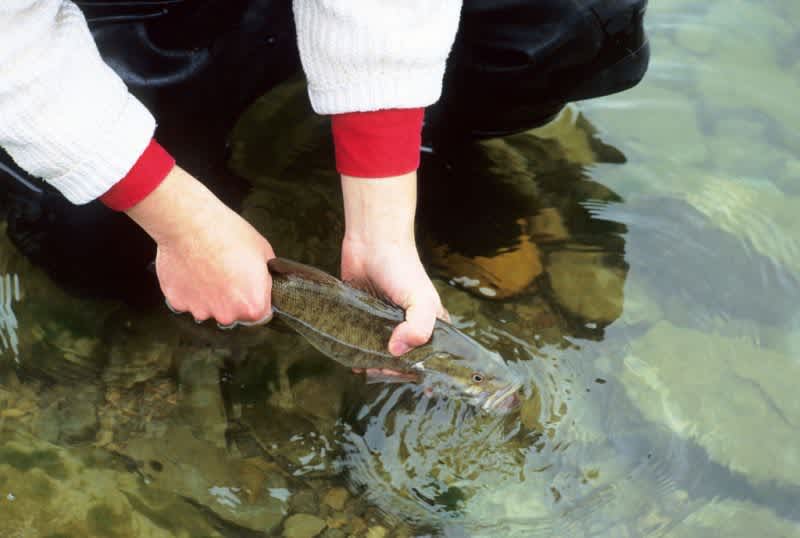Tips for Better Catch and Release
Dave Maas 06.13.16

In order to maintain fishing as a sport for generations to come, we must take care in handling the fish we release. The lower the mortality rate when fish are caught and released, the more populations will continue to grow, providing both sporting enjoyment and tasty meals well into the future. With this in mind, there are some techniques every angler should add to his or her arsenal to keep catch and release as quick and safe as possible.
One of the first things to consider when it comes to catch and release is how you should actually handle the fish. Using a rubber net is a good start because this will help avoid tissue tears that are possible when a catch is lifted vertically. When the time comes to actually lay hands on a fish, ensure your hands are wet. The reason for this is because fish are coated with a protective layer designed to protect them against disease and infection. If you touch a fish with dry hands, you can damage or remove this layer as it tends to adhere to dry skin. By wetting your hands or using appropriate gloves prior to contact, you help fish retain this natural defense against illness, creating better long-term survival odds. Additionally, when you have a fish in hand, take care to support the whole body rather than holding it only by the lip.
Much as we tire after a quick burst of energy, the same holds true for a fish after a fight on the line. You may notice a fish filled with vigor only moments ago now seems depleted and lethargic. For a fish such as this, remove the hook and return your catch to the water as fast as possible. The quickest way to revive a spent fish is to aid it in getting the oxygen it needs by allowing water to again flow through the gills. In a moving current, this can be done by simply placing and holding the fish in a position where water is able to flow through the gills from nose to tail. However, if the water is still, you will need to create your own current by gently moving the fish during recovery. Only release the fish when it has recovered and is able to swim away with fervor because larger predators won’t hesitate to snap up an easy meal.
No matter how much care you take when fishing, some of your catches will require some extra TLC. One instance of this is a fish that swallows the hook, a problem that can usually be remedied with fishhook removers, needle nose pliers, or hemostats, which should be a part of every tackle box big or small. With your tool of choice, remove the hook as quickly and cautiously as possible, ideally with the fish in the water during the process, but avoid removal methods that involve going through the gill. If you are unable to free the hook, you have a choice to make.
Depending on how badly imbedded the hook is, as well as the type of fish, cutting the line as closely as possible to the hook and leaving it could ultimately cause death in a very short amount of time, as can intense struggle to remove the hook. On the other hand, some fish can go on to survive as the hook rusts away. The key here is to determine the chance of survival of the fish in question and choose whether or not to keep it based on legal sizes and limits; the same also applies to fish that experience barotrauma due to rapid expansion of the swim bladder because these fish may never be able to function normally again. If you find that you have a repeat issue with swallowed hooks, consider de-barbing hooks or lessening the barb with pliers, as well as utilizing circle hooks or J-hooks instead of trebles.

Practicing proper catch-and-release tactics is a vital part of being a responsible angler. Take the time to safely release a fish today so it will live to be caught tomorrow.

